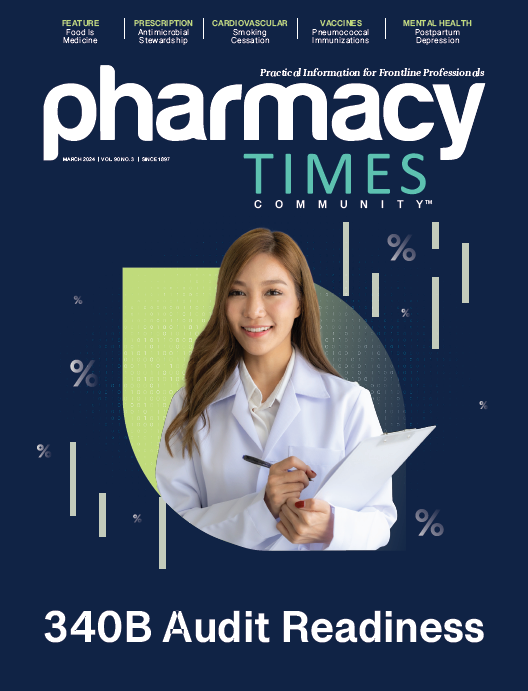About the Author
Joanna Lewis, PharmD, MBA, is the 340B compliance coordinator at Baptist Health in Jacksonville, Florida.
Contract pharmacies should work to stay in a perpetual state of audit readiness
The 340B Drug Pricing Program is a government-sponsored initiative that offers discounts on outpatient medications to eligible organizations with the intent of further stretching limited federal resources to benefit those in need.1 This program has been part of the hospital pharmaceutical supply chain for more than 30 years. With the Patient Protection and Affordable Care Act in 2010, the 340B program was further expanded to include new categories of hospitals.2
Although 340B is a program focused on health systems, recent research findings have shown that approximately 40% of retail pharmacies in the United States have at least 1 contract with a 340B-eligible health care provider, highlighting the role community pharmacies can play.3 The number of retail pharmacies with contracts has seen significant growth in recent years, from 789 in 2009 to 25,755 in 2022. The number of contracts per pharmacy also increased during the same period. In 2009, 81% of contract pharmacies had 1 contract, whereas in 2022, only 40% had 1 contract, 23% had 2 contracts, 27% had 3 to 5, 7% had 6 to 9, and 3% had 10 or more contracts.4
Joanna Lewis, PharmD, MBA, is the 340B compliance coordinator at Baptist Health in Jacksonville, Florida.
Pharmaceutical manufacturers participate in the 340B program through section 340B of the Public Health Service Act as a condition of participating in Medicaid. Manufacturers offer reduced medication prices to health care organizations that care for indigent and low-income patients. According to the Health Resources and Services Administration (HRSA), the governing body responsible for administering the 340B program, hospitals can achieve an average savings of 25% to 50% on pharmaceuticals through the 340B program.1
Facilities eligible to purchase 340B drugs through the 340B Drug Pricing Program, called covered entities (CEs), include a variety of organizations such as public and nonprofit disproportionate share hospitals, critical access hospitals, sole community hospitals, and rural referral centers. Savings from the 340B program are used to stretch federal resources and provide, for example, services for mental health clinics, free care for uninsured patients, and medication assistance, as well as fund community health programs.5
As part of this program, all participating CEs are responsible for ongoing compliance with program requirements.6,7 There are many regulations and operational boundaries that can present challenges for organizations to implement. To overcome these obstacles, it is important for CEs to stay in a continual state of audit readiness.
AUDITING RECOMMENDATIONS
To be in a continual state of audit readiness, CEs need to develop a robust audit strategy. This strategy not only benefits the entity by providing continuous insight into program performance, but ultimately allows resources to be stretched by supporting ongoing improvement and perpetual compliance. HRSA is responsible for ensuring the integrity of the program for eligible entities and manufacturers, and they do this through guidance, various means of support, and audits.7 With the increased growth of the program and scrutiny in recent years, HRSA has increased oversight of the program through random and targeted audits based on criteria that HRSA believes represent higher compliance risk scenarios.7
Another essential element of an audit strategy is to have an oversight committee that includes necessary stakeholders.8,9 Examples of key stakeholders are pharmacy personnel, finance team members, billing team members, internal compliance experts, informatics experts, and pharmacy procurement/inventory managers.
Once an audit strategy is in place, organizations need to decide the audit steps required and the frequency with which they will be performed. Important elements that should be included in an audit strategy include data and documentation review, internal auditing, independent external audits, and mock HRSA audits.7,9
DOCUMENTATION AND DATA REVIEW
Any auditing strategy should include all necessary documentation required for an HRSA audit, including policies and procedures that are aligned with the hospital’s program practices and operations. Policies should address the necessary elements of the program (eg, patient definition, eligible locations, diversion), and compliance to each point should be demonstrated in audits. Documentation also needs to include eligibility and recertification forms, ensure the HRSA database is up to date, and verify that federal grants and contracts are readily available if applicable.9 Inventory management should have crosswalks that show applicable accounts and invoices.
INTERNAL AUDITING
The purpose of internal auditing is to monitor trends, assess compliance, and help identify potential diversion, software inaccuracies, and other problem areas. Internal auditing should examine the integrity of split-billing data extracts and target diversion, duplicate discounts, the Medicaid exclusion file, and inventory management.9,10 It should also involve pulling a dispensation sample. HRSA does not provide specific requirements on how to audit or how often, but it should be customized to every organization. Many entities self-audit either monthly or quarterly.
Independent external audits are also instrumental to the integrity of the program. HRSA has set expectations via posted notices around contract pharmacies with the recommendation that they conduct independent external audits through an outside company. Mock HRSA audits are an additional step that will support the program. In the mock audits, an organization should go through the data request list and involve all necessary individuals that they would have involved during a real audit.7,9
SPECIAL REQUIREMENTS AND REMINDERS
Several changes have been made to the HRSA data request form and auditing requirements in the past few years. Included here are a few recommendations based on recent trends:
CONCLUSION
Auditing the 340B functions is one of the most critical steps for contract pharmacies to ensure compliance with federal requirements. Developing a good audit strategy that includes necessary elements of data and documentation, self-auditing, and external audits ensure a strong 340B program. Keeping up with the latest auditing requirements is also important, and regular updates and resources can be found through the HRSA or Apexus websites.
